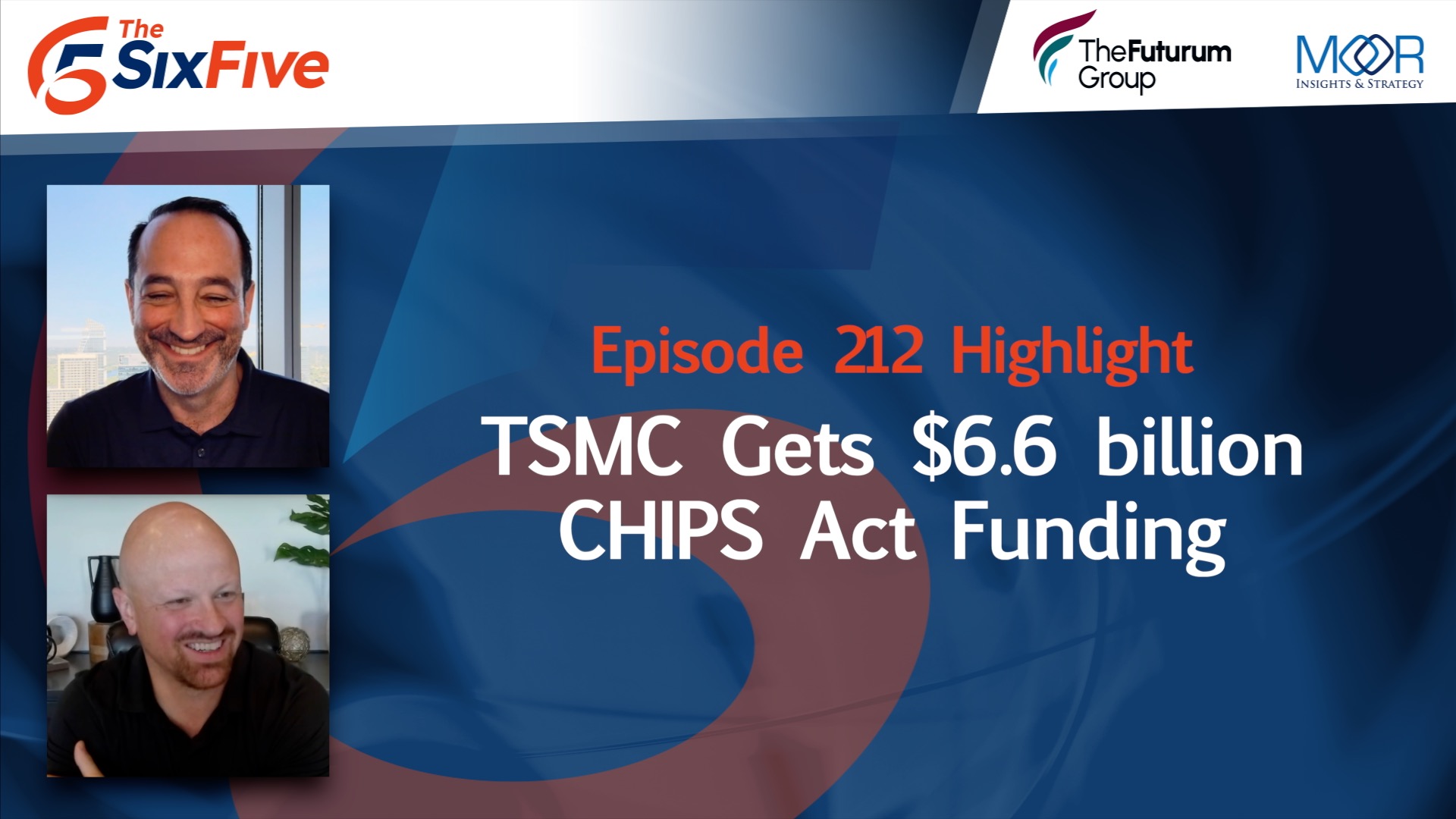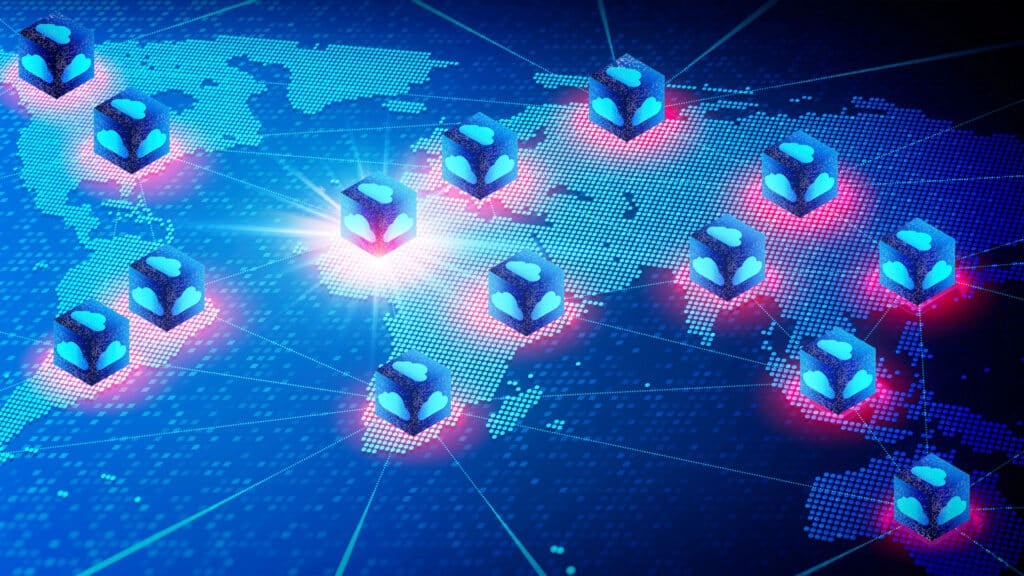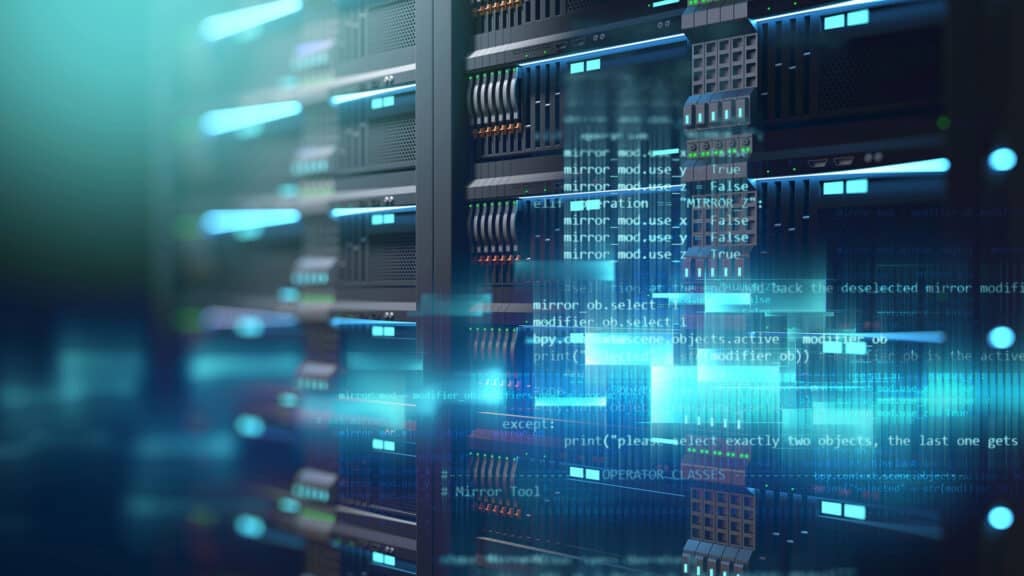The Six Five team discusses TSMC Gets $6.6 billion CHIPS Act funding.
If you are interested in watching the full episode you can check it out here.
Disclaimer: The Six Five Webcast is for information and entertainment purposes only. Over the course of this webcast, we may talk about companies that are publicly traded and we may even reference that fact and their equity share price, but please do not take anything that we say as a recommendation about what you should do with your investment dollars. We are not investment advisors and we ask that you do not treat us as such.
Transcript:
Patrick Moorhead: TSMC. All the American companies getting money. Dan, what’s going on here?
Daniel Newman: I don’t think the T stands for US. By the way, I don’t think the U and UMC stands for United States either, but I don’t know who the next company that’s going to get money that is not American. So the CHIPS Act was really all about building resiliency for the supply chain, maintaining technology leadership amongst the kind of alliance countries in the Western world, meaning everyone that’s not China, Russia more or less, but really China, Russia’s not doing anything with chips. If you want heating oil, you can go to Russia. The bottom line of it is though is so last week or two weeks ago Pat, Intel got its award. It was like 11 billion plus, no, it was 8 billion plus another 11 billion in loans. And who else is getting money? We’ve seen others getting money, we’re hearing Samsung is getting money. GlobalFoundries has gotten some money.
But TSMC got a big grant award from US 6.6 billion, almost as much as Intel, which to me was kind of wild. And they got another what, 5 billion more or less in loans. And this is three chip factories that they’re going to build in Phoenix, right, or Arizona. They’ve had a hard time building these factories, these fabs. It’s taken them a long time. And so will this money help them accelerate that? Now again, I believe Pat, this is five nanometer is what they’re talking about this being, their five nanometer process.
Patrick Moorhead: Two nanometer.
Daniel Newman: It’s two. I’m going to go back. I believe this is their two nanometer process and this is a pretty considerable loan and support for TSMC to get there because beforehand they were really kind of only coming down to what would be kind of an older leading nodes like seven, and they hadn’t really executed or built anything here. Here’s my take on what happened though Pat, is I think the fab less companies, while they are willing to consider Intel and starting to work with Intel at the foundry level, I think they are very happy with TSMC and I think they are generally putting some level of pressure on US regulators and policymakers and those that are doling out the money to basically make sure TSMC is here for two reasons. One is we want competition in the US for leading edge foundry, and two, they want to continue working with the company they’ve spent, invested heavily into be able to build their chips.
I also think Intel, while I do feel optimistic about their foundry prospects, hasn’t really been able to prove yet that it can do the foundry thing at scale. So if we actually want to execute this leading edge manufacturer here in the US, we need diversification. So that’s why I think it was so much money, it ended up being a lot more than expected. It kind of went against the grain of real nationalism. Now we’re having more investment in Samsung and more investment in TSMC and even global foundries is Middle Eastern sovereign money. I mean, but at the same time it’s what they needed to do. So I know we’re running quick and we got to keep moving. So my take here is good win for TSMC. Overall, probably good for US, that we’re going to have a diversification of manufacturing. Kind of a kick in the teeth for Intel. But look, Intel executes, I think Intel’s foundry business has a good opportunity.
Patrick Moorhead: So CHIPS Act, US wants to get 20% of leading edge in the US by 2030, and this is a good step in the right direction. Listen, more competition is good. It increases innovation, it lowers prices, which in the end is what makes the world go round here. So I’ll be honest, it’s a little murky at exactly when we’re going to see two nanometer in Arizona. I believe that there was some sort of discussion to get this money that would be okay, you can’t be N minus one and if it’s truly 2028 before it’ll be online, they will be very much behind Intel on that and they’ll have two nanometer in Taiwan earlier. So I’m piecing the dates and the technology together, but one thing that I do know for certain is TSMC hasn’t broken ground on their new facility yet Intel has in Columbus,
And listen, Intel has had fabs in the United States forever. They know how to bring that ecosystem together in the United States. TSMC is less experienced at that in the United States, and quite frankly, there has been some friction with TSMC and the unions. I’m going to paraphrase, TSMC essentially calling US workers lazy. And when you’re trying to go for multiple billions of dollars, that just creates a political mess. And I will tell you, having talked to senior executives at every one of their US based design customers, they cringe and TSMC needs to get its act together, quite frankly.
Daniel Newman: Domestically.
Patrick Moorhead: Yeah, domestically. Their public posture is very much a monopolist and when you’re on top, and yes, they are on top as a foundry, but in the end, more competition is better.
Author Information
Daniel is the CEO of The Futurum Group. Living his life at the intersection of people and technology, Daniel works with the world’s largest technology brands exploring Digital Transformation and how it is influencing the enterprise.
From the leading edge of AI to global technology policy, Daniel makes the connections between business, people and tech that are required for companies to benefit most from their technology investments. Daniel is a top 5 globally ranked industry analyst and his ideas are regularly cited or shared in television appearances by CNBC, Bloomberg, Wall Street Journal and hundreds of other sites around the world.
A 7x Best-Selling Author including his most recent book “Human/Machine.” Daniel is also a Forbes and MarketWatch (Dow Jones) contributor.
An MBA and Former Graduate Adjunct Faculty, Daniel is an Austin Texas transplant after 40 years in Chicago. His speaking takes him around the world each year as he shares his vision of the role technology will play in our future.




